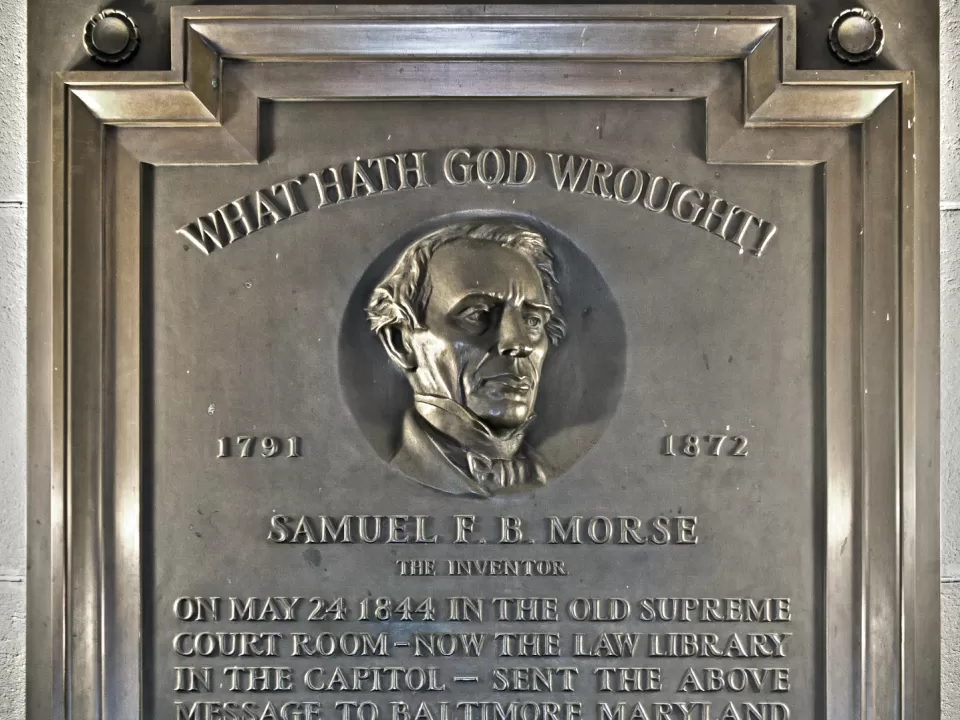
Highlight
Telegraph Centennial Plaque
On May 24, 1844, in the Old Supreme Court Room, a message was sent by the first electro-magnetic telegraph instrument.
Image Gallery
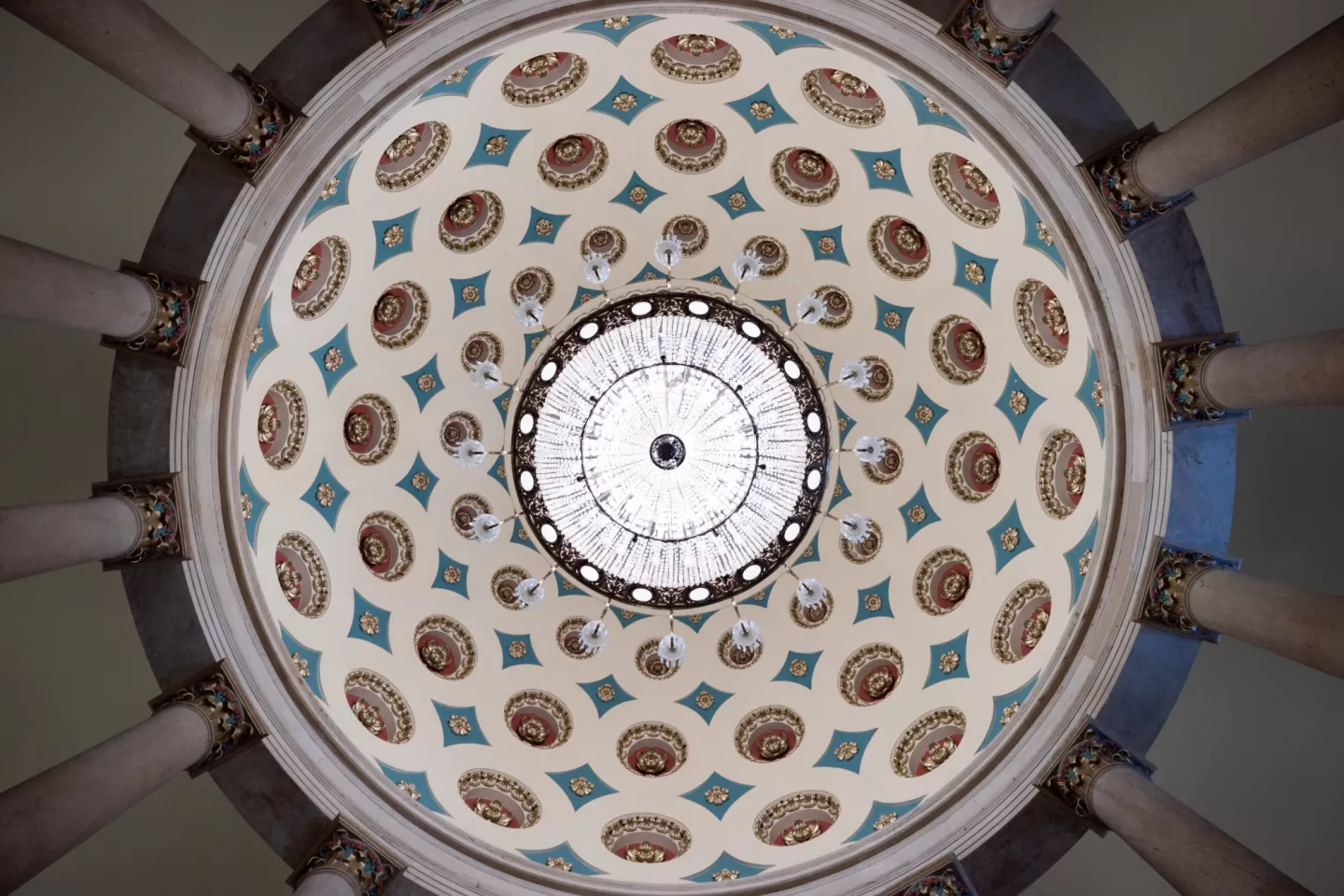
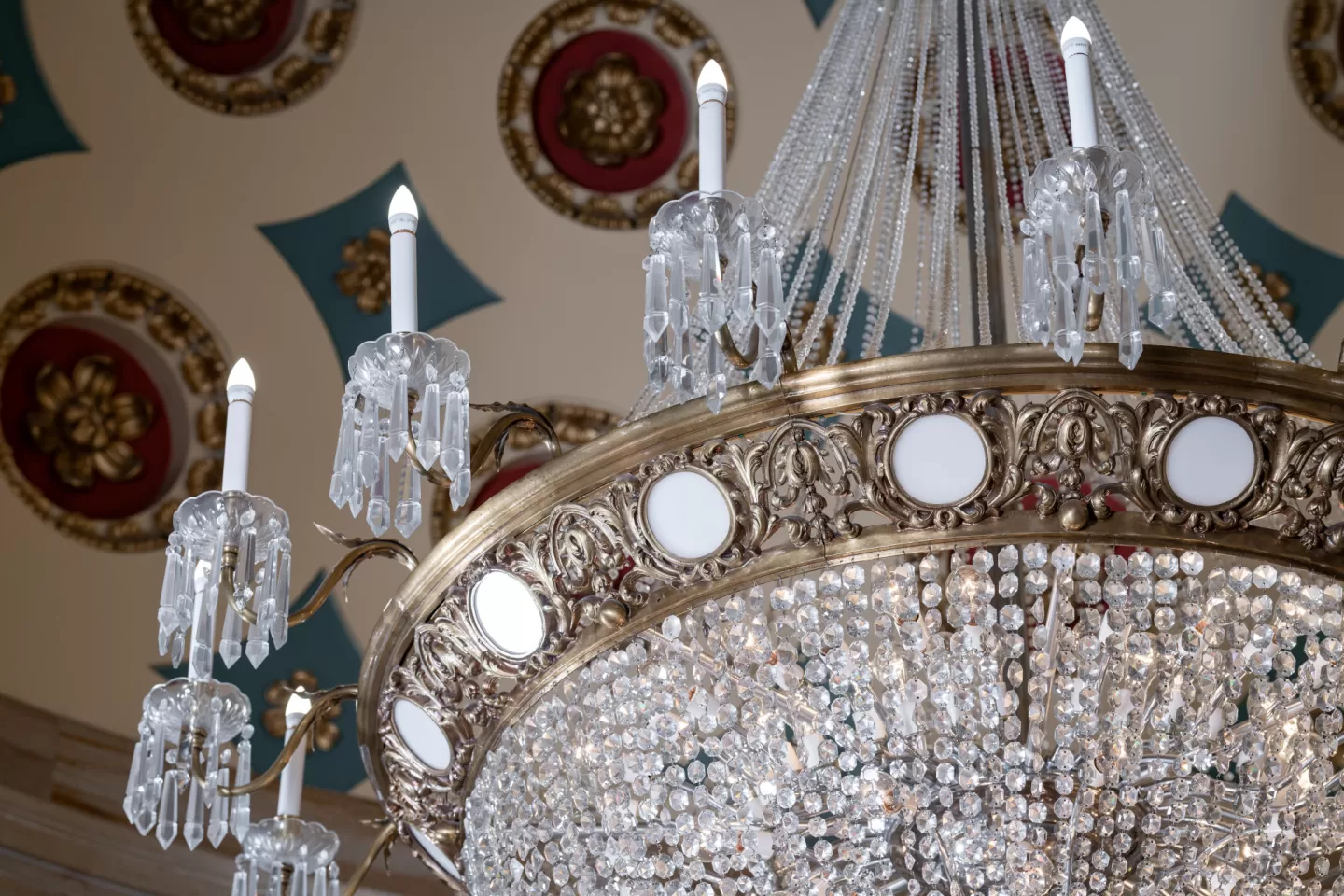
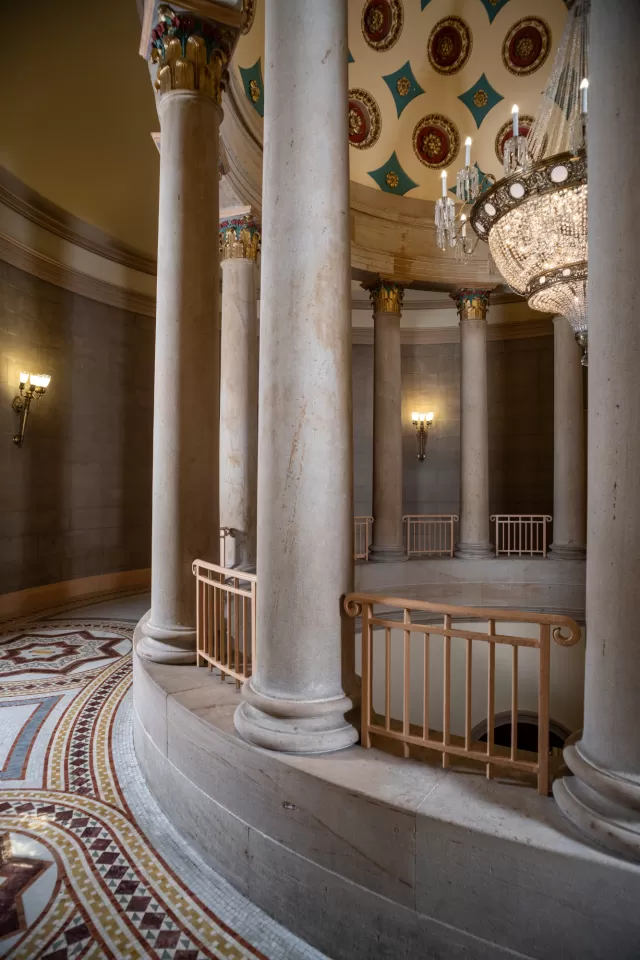
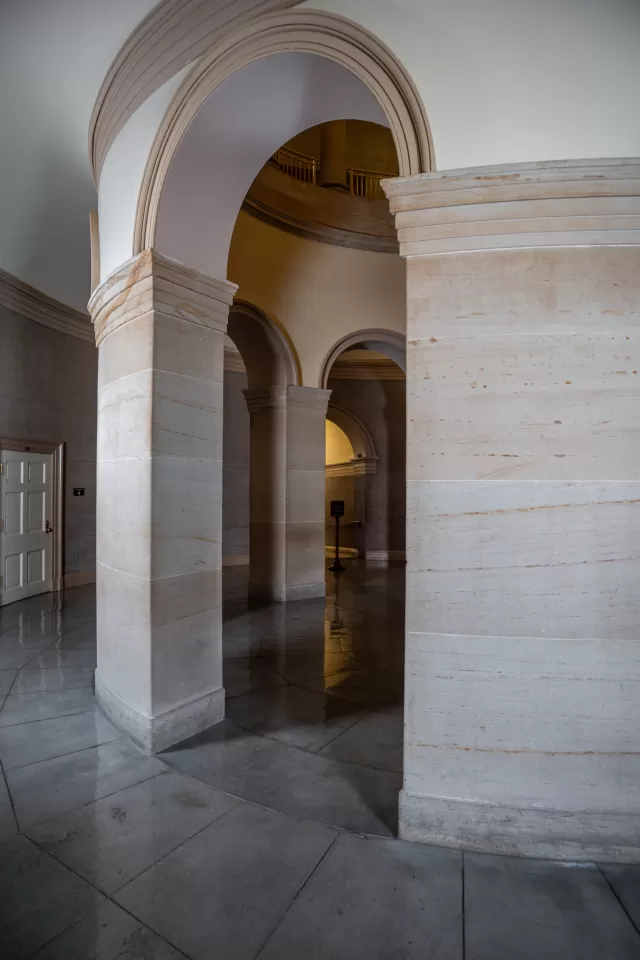

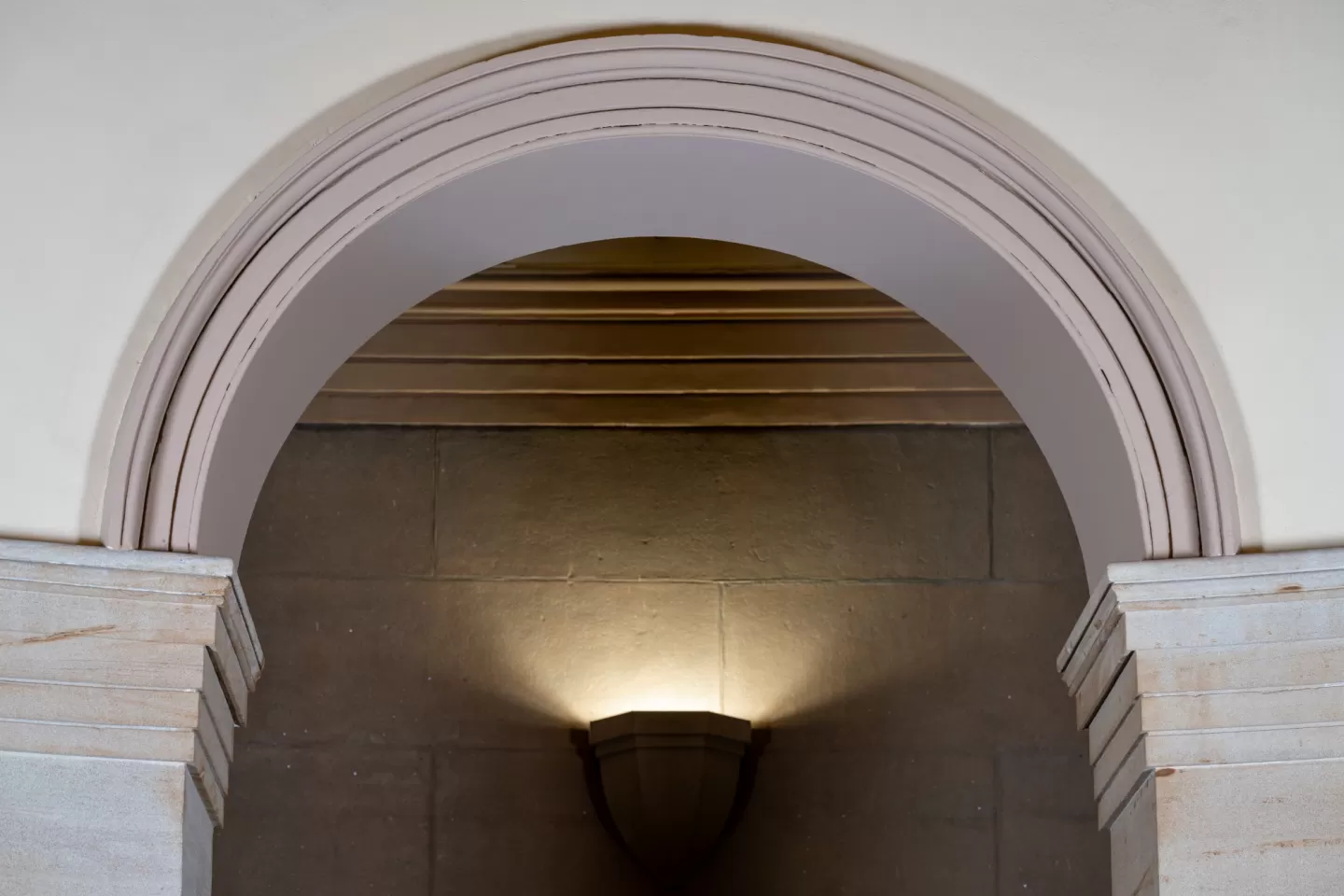


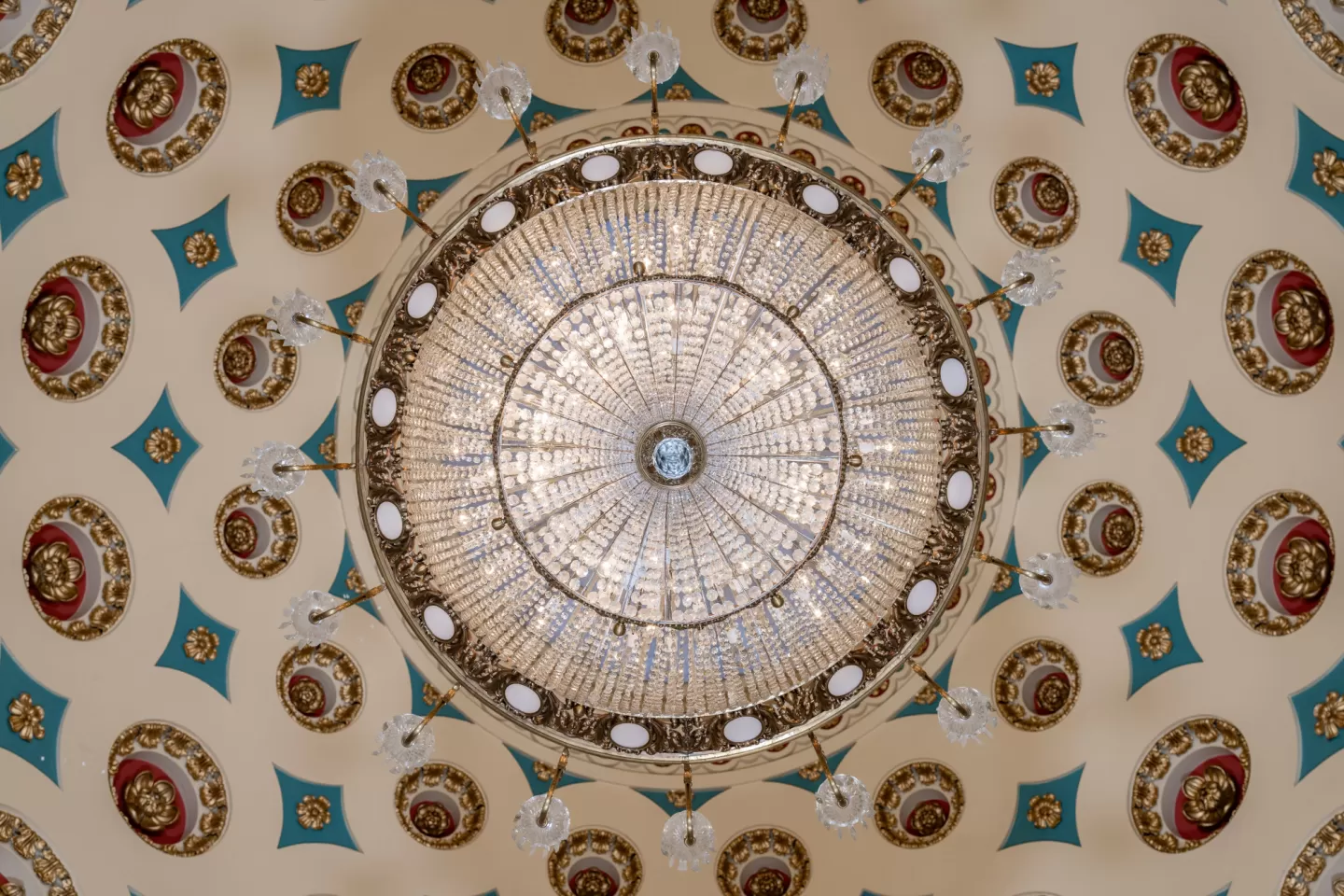
Senate Wing
It was constructed after the fire of 1814 as a means of lighting the corridors and circulating air into rooms that open onto the space.
In the pre-fire period this elliptical space housed the Senate wing’s main staircase. Benjamin Henry Latrobe remarked to Thomas Jefferson that "it was one of the most remarkable parts of the Capitol." In rebuilding the wing’s interior after the fire, Latrobe moved the staircase to the east and in its place erected a circular arcade holding 16 columns, which, in turn, support a dome.
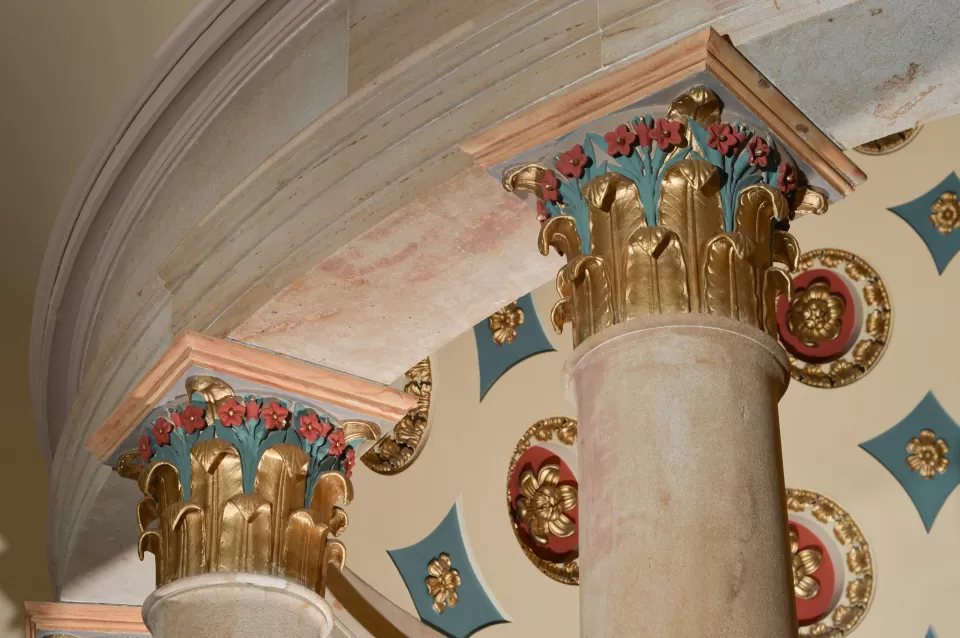
Desiring columns that were more slender than the Ionic order but not so elaborate as the Corinthian, Latrobe designed a capital with the leaves and flowers of the native American tobacco plant; they were modeled by Francisco Iardella in 1816. Coffers with rosettes decorate the dome and a glass skylight covers the oculus. Crowning the space is a lantern, a small circular turret ringed with windows that originally admitted natural light and air to the corridors below.
This space was heavily damaged in November of 1898 when a gas explosion blew up the Seneca stone floor and the supporting arches and blew out the glass and sashes in the lantern. Repair work was quickly accomplished before Congress returned. In a 1901 effort to make the building fireproof, Architect of the Capitol Elliott Woods rebuilt the roof, replacing the wooden structure with steel. At the same time, the former attic space was reconstructed into a useable floor, thus cutting off the light and air to the small rotunda. About that time, the six torch-like sconces were mounted on the lower walls. In 1902 the current terrazzo and mosaic floor on the second floor was installed by the Vulcanite Tile and Mosaic Company; the "temporary" cement floor is still in place on the floor below. The decorative metal grille in the center of the floor was also installed at the time, replacing an earlier grille damaged by the explosion.
In a 1907 effort to restore the historic appearance of the corridors, crypt and small rotunda, Elliott Woods removed the plaster and paint from the brick walls and installed imitation sandstone in their place. The current paint scheme in the small Senate rotunda dates from 1971. The two matching three-armed sconces mounted on the east wall were purchased from Gonzalez Antiques and installed in 1963.
The chandelier hanging in this rotunda was purchased for $1,500 from the ABC Wrecking Co., which had removed it from the Capitol Hill United Methodist Church on Seward Square in southeast Washington, D.C., before razing that building. The chandelier reputedly has 14,500 crystals and weighs nearly 2,000 pounds. It is suspended from an electrically driven winch on a steel cable, which allows it to be lowered for cleaning.

Highlight
On May 24, 1844, in the Old Supreme Court Room, a message was sent by the first electro-magnetic telegraph instrument.









Senate Wing